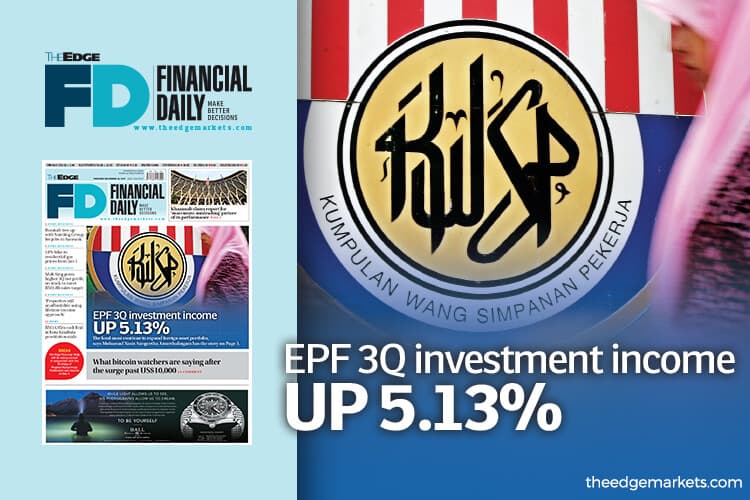
This article first appeared in The Edge Financial Daily on November 30, 2017
KUALA LUMPUR: The Employees Provident Fund’s (EPF) investment income grew 5.13% year-on-year to RM12.95 billion for the third quarter ended Sept 30, 2017 (3Q17) from RM12.32 billion.
The quarterly income growth was mainly driven by its investments’ foreign equities, whose prices have climbed.
Interestingly, the growth pace was the slowest so far this year compared with 73.9% in the first quarter and 36.36% in the second quarter. However, the investment income in 3Q17 is the highest compared with the two preceding quarters. The provident fund reported investment income of RM11.79 billion in 1Q17 and RM11.51 billion in 2Q17.
Deputy chief executive officer (investment) Datuk Mohamad Nasir Ab Latif (pic) said the EPF did not see similar returns from its investments in the local equities as the benchmark FBM KLCI’s performance was flat during the quarter under review compared with other markets that had growth between 2% and 5%.
Overseas investments made up 30% of the provident fund’s total investment assets. Such investments had contributed 48% of it total investment income in the quarter under review.
“Diversification into different asset classes in various countries and currencies helped EPF record higher income for the quarter despite significant differences in market performance globally,” he said in the statement.
Out of the RM12.95 billion investment income, EPF allocated RM860.83 million for Simpanan Shariah, which derives its income solely from syariah assets, while the RM12.09 billion was for Simpanan Konvensional, generated by its share of both syariah and non-syariah assets.
Mohamad Nasir said EPF’s net impairment expanded 126.4% to RM791.55 million in 3Q17 year-on-year (y-o-y) compared with RM349.59 million due to higher provision recorded for domestic equities in the telecommunications, and oil and gas sectors.
The provident fund showed that equities accounted for 41.86% of EPF’s total investment assets as at Sept 30. This asset class contributed RM7.91 billion, or 61.09% of the total investment income. The amount was 12.75% higher against RM7.02 billion in the previous corresponding quarter.
Fixed income instruments, which accounted for 50.45% of EPF’s investment assets, generated income of RM4.49 billion, which is equivalent to 34.63% of its total investment income in 3Q17.
“Of that, Malaysian Government Securities & Equivalent recorded RM2.17 billion, up 10.96% from RM1.95 billion in 3Q17, is in line with the growth of the portfolio. Loans and bonds, however, generated lower investment income of RM2.32 billion compared with RM2.56 billion a year ago,” EPF said.
Meanwhile, money market instruments, and real estate and infrastructure represented 3.53% and 4.16% of the total investment assets respectively. Money market instruments contributed RM274.27 million, while real estate and infrastructure RM263.83 million in the quarter under review.
The EPF said its current investment in money market instruments is above its targeted 3% under the strategic asset allocation due to ongoing regulatory restrictions in new overseas investments.
“In the long run, the EPF must continue to expand our foreign asset portfolio as it is key to our diversification and allows us to meet our return targets,” Mohamad Nasir said.
He pointed out that the EPF’s value for investment assets had grown 5.48% or RM40.09 billion to RM771.2 billion as at Sept 30 from RM731.11 billion as at Dec 31, 2016.
Out of the total investment assets, RM370.1 billion or 48% are in syariah-compliant investments with the balance in non-syariah assets.
Moving forward, Mohamad Nasir said the EPF is confident its diversification into various asset classes would help it to meet its real dividend target of at least 2% above inflation over a three-year rolling period by the end of the year.